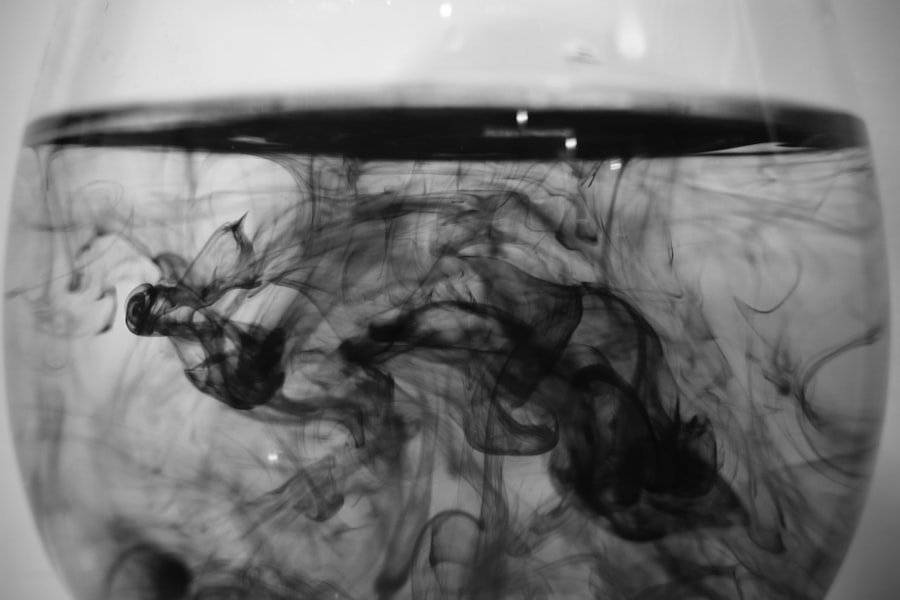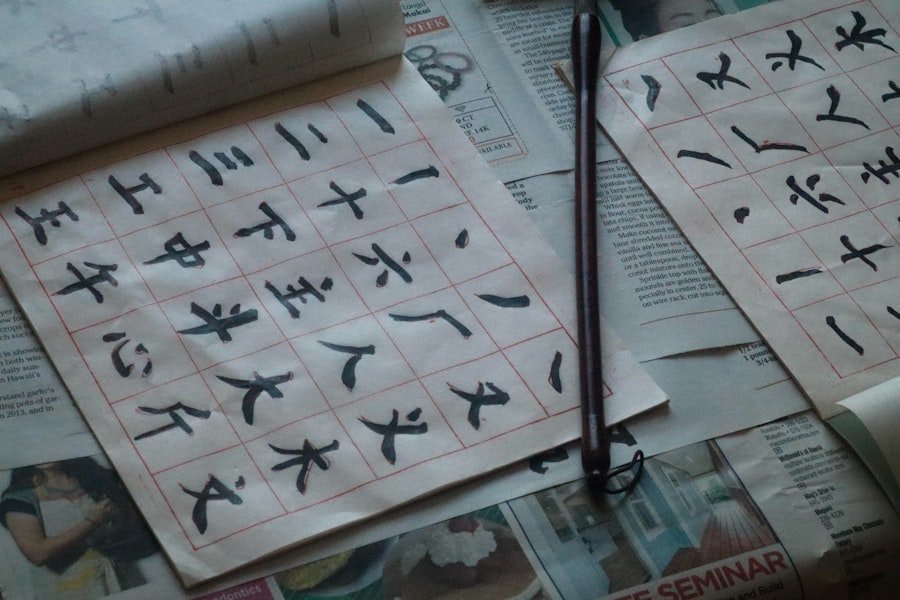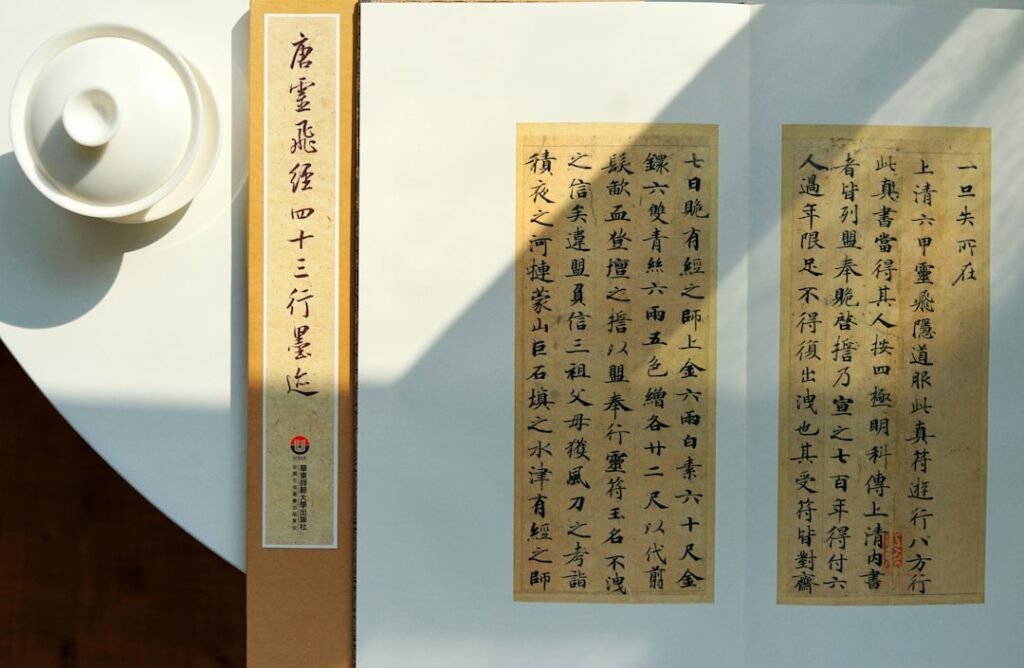Chinese calligraphy is a profound art form that transcends mere writing; it embodies the essence of Chinese culture and philosophy. Among the myriad of brushstrokes that define this ancient practice, the concepts of bone, meat, and sinew stand out as fundamental elements. These terms, while seemingly anatomical, represent the underlying structure, vitality, and fluidity of the characters created by the brush.
The interplay of these elements not only enhances the aesthetic appeal of the calligraphy but also conveys deeper meanings and emotions. The term “bone” refers to the foundational structure of a character, akin to the skeletal framework that supports a living being. It signifies strength and stability, providing a solid base upon which the other elements can flourish.
“Meat,” on the other hand, represents the flesh and vitality of the characters, imbuing them with life and energy. Finally, “sinew” embodies the connective tissue that binds these elements together, ensuring harmony and fluidity in the strokes. Understanding these components is essential for any aspiring calligrapher, as they form the backbone of effective brushwork. Master the art of Chinese calligraphy. Enroll now at the LC Chinese School in Oslo.
Table of Contents
ToggleSummary
- Bone, meat, and sinew are essential elements in Chinese brushstrokes, representing strength, vitality, and resilience.
- These elements hold deep cultural and historical significance in Chinese culture, symbolising the interconnectedness of life and the natural world.
- Understanding the stroke order and technique for depicting bone, meat, and sinew is crucial for achieving balance and harmony in Chinese calligraphy.
- There are various styles and variations of bone, meat, and sinew in Chinese calligraphy, each with its own unique beauty and expression.
- Mastering the incorporation of bone, meat, and sinew into Chinese brushstroke art requires patience, practice, and a deep appreciation for the art form.
The Symbolism of Bone, Meat, and Sinew in Chinese Culture
In Chinese culture, bone, meat, and sinew are not merely physical entities; they are rich in symbolism and meaning. Bone is often associated with strength, resilience, and permanence. It reflects the idea of enduring values and principles that withstand the test of time.
In contrast, meat signifies vitality and life force. It embodies the dynamic aspects of existence, representing growth, change, and the vibrancy of life. Sinew, as a connective element, symbolizes unity and coherence, highlighting the importance of relationships and interdependence in both art and life.
These symbolic interpretations extend beyond calligraphy into various facets of Chinese philosophy and art. For instance, in traditional Chinese medicine, bones are seen as the foundation of health, while meat represents nourishment and vitality. Similarly, in literature and poetry, these elements are often used metaphorically to convey complex emotions and ideas.
By incorporating bone, meat, and sinew into their brushstrokes, calligraphers not only create visually striking characters but also infuse their work with profound cultural significance.
Understanding the Stroke Order and Technique for Bone, Meat, and Sinew

Mastering the stroke order is crucial for any calligrapher aiming to depict bone, meat, and sinew effectively. Each character in Chinese calligraphy is composed of a series of strokes that must be executed in a specific sequence to maintain balance and coherence. The stroke order is not arbitrary; it is rooted in centuries of tradition and practice.
For instance, starting from the top left and moving to the bottom right is a common guideline that helps establish a natural flow in the characters. In addition to stroke order, technique plays a vital role in capturing the essence of bone, meat, and sinew. The pressure applied to the brush can dramatically alter the appearance of each stroke.
A firm grip may produce bold lines that evoke strength (bone), while a lighter touch can create delicate curves that suggest fluidity (meat). Furthermore, varying the speed at which strokes are executed can enhance the overall dynamism of the characters. By mastering these techniques, calligraphers can breathe life into their work, allowing each character to resonate with its intended meaning.
The Importance of Balance and Harmony in Depicting Bone, Meat, and Sinew
Balance and harmony are paramount in Chinese calligraphy, particularly when depicting bone, meat, and sinew. The interplay between these elements must be carefully considered to create a visually appealing composition. A character that is too rigid may lack vitality, while one that is overly fluid may appear chaotic.
Striking a balance between strength and grace is essential for conveying the intended message effectively. Harmony extends beyond individual characters to encompass entire compositions as well. The arrangement of characters on a page should reflect a sense of unity and coherence.
This can be achieved through careful consideration of spacing, alignment, and overall layout. A harmonious composition not only enhances the visual impact but also invites viewers to engage with the work on a deeper level. In this way, balance and harmony serve as guiding principles for calligraphers seeking to express the intricate relationship between bone, meat, and sinew.
Exploring the Different Styles and Variations of Bone, Meat, and Sinew in Chinese Calligraphy
Chinese calligraphy boasts a rich tapestry of styles that reflect diverse cultural influences and historical contexts. Each style offers unique interpretations of bone, meat, and sinew, allowing calligraphers to express their individuality while adhering to traditional principles. For instance, the regular script (Kai Shu) is characterised by its clear structure and legibility, making it an ideal medium for emphasising the strength of bone.
In contrast, the cursive script (Cao Shu) embraces fluidity and spontaneity, capturing the essence of meat through its dynamic strokes. Moreover, regional variations further enrich the landscape of Chinese calligraphy. Different provinces may have distinct approaches to depicting bone, meat, and sinew based on local customs and artistic preferences.
This diversity not only showcases the versatility of Chinese calligraphy but also highlights its ability to adapt to various cultural contexts. By exploring these different styles and variations, aspiring calligraphers can find inspiration and develop their unique voice within this timeless art form.
The Role of Bone, Meat, and Sinew in Chinese Art and Calligraphy

Bone, meat, and sinew play a significant role not only in calligraphy but also in broader Chinese art forms. In traditional Chinese painting, for instance, these elements are often mirrored in the depiction of figures and landscapes. Artists strive to capture the essence of their subjects by emphasising their structural integrity (bone), vitality (meat), and interconnectedness (sinew).
This holistic approach reflects a deep understanding of both nature and human experience. Furthermore, the principles underlying bone, meat, and sinew extend to other artistic disciplines such as sculpture and pottery. In these mediums, artists seek to create works that resonate with viewers on multiple levels—physically through form (bone), emotionally through expression (meat), and conceptually through narrative (sinew).
As such, these elements serve as foundational concepts that unify various forms of Chinese art while reinforcing their cultural significance.
The Cultural and Historical Significance of Bone, Meat, and Sinew in Chinese Brushstrokes
The cultural and historical significance of bone, meat, and sinew in Chinese brushstrokes cannot be overstated. These concepts have been integral to Chinese aesthetics for centuries, shaping not only calligraphy but also philosophy and literature. The ancient texts often reference these elements as metaphors for understanding human nature and relationships.
For example, Confucian teachings emphasise the importance of balance between strength (bone) and compassion (meat) in fostering harmonious relationships. Historically, renowned calligraphers have drawn upon these principles to create works that resonate with audiences across generations. Their mastery of bone, meat, and sinew has set benchmarks for aspiring artists while contributing to an evolving dialogue about identity and expression within Chinese culture.
As contemporary artists continue to explore these themes in their work, they honour this rich legacy while pushing boundaries to redefine what it means to engage with these foundational concepts.
Techniques for Incorporating Bone, Meat, and Sinew into Chinese Brushstroke Art
Incorporating bone, meat, and sinew into Chinese brushstroke art requires a thoughtful approach that balances technique with creativity. One effective method is to begin by sketching out the basic structure of a character using light strokes that emphasise its skeletal framework (bone). Once this foundation is established, artists can gradually build upon it by adding layers that convey vitality (meat) through varied brush pressure and speed.
Additionally, experimenting with different brushes can yield diverse results when depicting these elements. For instance, using a larger brush may allow for broader strokes that evoke strength (bone), while finer brushes can create intricate details that suggest delicacy (meat). Moreover, incorporating colour can further enhance the representation of these concepts; warm hues may evoke warmth and life (meat), while cooler tones might suggest stability (bone).
By exploring these techniques creatively, artists can develop their unique interpretations of bone, meat, and sinew within their brushwork.
The Influence of Bone, Meat, and Sinew in Chinese Calligraphy and Painting
The influence of bone, meat, and sinew extends far beyond individual works; it permeates the very fabric of Chinese calligraphy and painting as a whole. These concepts serve as guiding principles that inform artistic choices across generations. Calligraphers often draw inspiration from traditional texts that emphasise these elements as essential components of effective brushwork.
Moreover, contemporary artists continue to reinterpret these ideas within modern contexts. By blending traditional techniques with innovative approaches—such as digital media or mixed media—artists are able to explore new dimensions of expression while remaining rooted in their cultural heritage. This ongoing dialogue between tradition and innovation ensures that bone, meat, and sinew remain relevant themes within contemporary artistic practice.
Tips for Beginners on Mastering Bone, Meat, and Sinew in Chinese Brushstrokes
For beginners eager to master bone, meat, and sinew in their brushstrokes, several practical tips can facilitate their journey into this intricate art form. Firstly, it is essential to invest time in understanding stroke order thoroughly; practising basic strokes repeatedly will build muscle memory essential for executing more complex characters later on. Additionally, observing works by accomplished calligraphers can provide valuable insights into how they interpret bone (structure), meat (vitality), and sinew (fluidity) within their compositions.
Attending workshops or classes led by experienced instructors can also offer hands-on guidance tailored specifically towards mastering these concepts. Finally—and perhaps most importantly—beginners should embrace experimentation without fear of imperfection. Each stroke offers an opportunity for growth; by allowing themselves room for exploration within their practice—whether through varying brush pressure or trying different styles—they will gradually develop their unique voice as artists.
Appreciating the Beauty and Complexity of Bone, Meat, and Sinew in Chinese Brushstrokes
In conclusion, bone, meat, and sinew represent more than mere anatomical references within Chinese brushstrokes; they embody profound cultural significance that resonates throughout history. By understanding these elements—strength (bone), vitality (meat), harmony (sinew)—calligraphers can create works that transcend mere aesthetics to convey deeper meanings rooted in tradition. As one delves into this intricate art form—whether through formal education or personal exploration—the beauty lies not only in mastering technique but also in appreciating how these concepts intertwine with broader cultural narratives.
For those interested in honing their skills further or exploring this captivating art form more deeply—especially within an enriching environment—the LC Chinese School in Oslo offers exceptional courses dedicated specifically to Chinese calligraphy. At LC Chinese School in Oslo, students have the opportunity to immerse themselves in this ancient practice under expert guidance while exploring the nuances of bone, meat, and sinew through hands-on experience. Whether you are a complete novice or seeking to refine your skills further—these courses provide an invaluable platform for appreciating both the beauty and complexity inherent within each stroke made by brush on paper.
Master the art of Chinese calligraphy. Enroll now at the LC Chinese School in Oslo.







